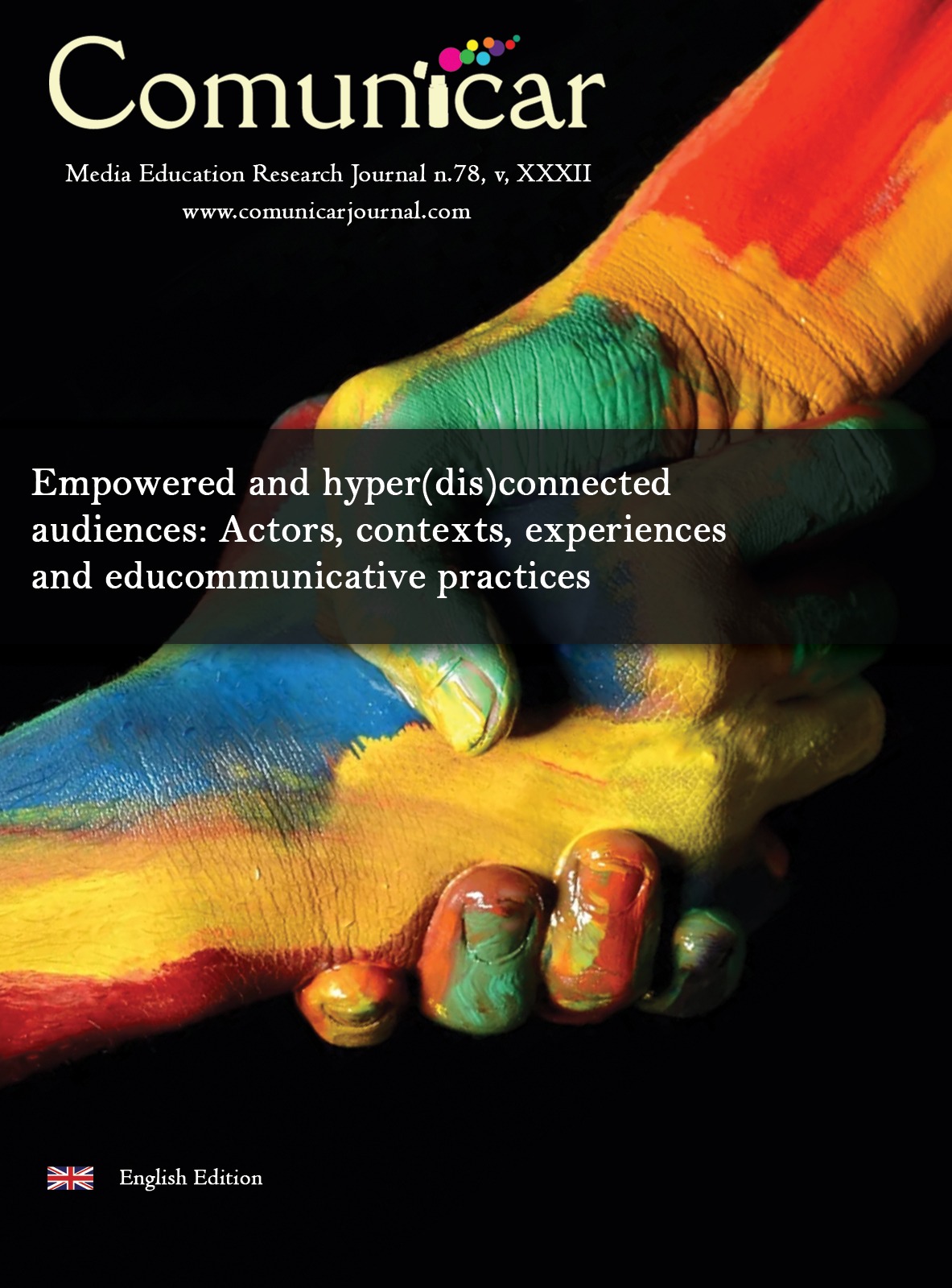未来教育:澳大利亚、西班牙和智利的课程与教育实践
IF 5.1
1区 文学
Q1 COMMUNICATION
引用次数: 2
摘要
媒体、电影、书籍和学校中的故事塑造了年轻人对未来的看法。教育课程是由一系列知识组成的,这些知识优先于理解未来的某些方式。年轻人经常想象一个经济、社会和/或气候危机的未来。然而,他们也为自己想象了一个光明的未来,与他们为社会想象的未来脱节。在这篇文章中,我们对澳大利亚、西班牙和智利的课程进行了定性分析,并采访了这些国家的教师。我们调查了这些课程中未来教育的存在和缺乏,它们在未来教育方面的发展程度,并初步分析了未来教育对学校的影响。为此,我们确定了四个维度:及时的情况、预测、想象替代未来和社会行动。结果表明,虽然澳大利亚课程明确包括未来的教育,但西班牙和智利的课程仅切线包括这一点。此外,学校的社会文化背景和教学人员的意愿是决定未来教育在学校环境中实施的因素。各种研究表明,年轻人对未来的看法取决于媒体、电影、书籍以及学校中的故事。教育课程包括一系列内容,这些内容优先于理解未来的某些方式。在经济、社会和/或气候危机中,青年往往代表着未来。然而,他们为自己设想了一个光明的未来,完全脱离了社会的未来。在这篇文章中,我们对澳大利亚、西班牙和智利的课程进行了描述性和解释性的定性分析,并采访了这些国家的教师,以研究未来教育在其课程中的存在和缺失及其发展程度,并初步分析了未来教育对学校的影响。为此,我们确定了四个维度:时间定位、预测、想象替代未来和社会行动。结果表明,虽然澳大利亚课程明确包括未来教育,但西班牙和智利课程仅以切线的方式包括未来教育。此外,该中心的社会文化背景和教师的意愿是决定学校未来教育发展的因素。本文章由计算机程序翻译,如有差异,请以英文原文为准。
Futures education: Curriculum and educational practices in Australia, Spain, and Chile
The images of the future among young people have been conditioned by the stories present in the media, films, books, and also in school. Educational curriculums are made up of a selection of knowledge that privileges some ways of understanding the future over others. Young people often imagine a future that is in economic, social, and/or climate crisis. However, they also imagine a bright future for themselves, detached from the future they imagine for society. In this article, we present a qualitative analysis of the curriculums of Australia, Spain, and Chile, together with interviews with teachers from these countries. We investigate the presence and absence of futures education in these curriculums, their degree of development regarding futures education, and make a first analysis of the influence of futures education in schools. To do this we identify four dimensions: situate in time, anticipate, imagine alternative futures, and social action. The results show that, while the Australian curriculum explicitly includes education for the future, the Spanish and Chilean curriculum include it only tangentially. In addition, the socio-cultural context of schools and the will of the teaching staff are elements that determine the implementation of futures education in the school context.
Diversos estudios nos indican que las imágenes del futuro que tienen los jóvenes están condicionadas por los relatos presentes en los medios de comunicación, las películas, los libros y también en la escuela. Los currículos educativos incluyen una selección de contenidos que privilegian unas formas de entender el futuro por encima de otras. Los jóvenes suelen representar un futuro en crisis económica, social y/o climática. Sin embargo, estos imaginan para sí mismos un futuro brillante, totalmente desligado del futuro de la sociedad. En este artículo presentamos un análisis cualitativo de carácter descriptivo e interpretativo de los currículos de Australia, España y Chile, junto con entrevistas a docentes de estos países, para estudiar la presencia y ausencia de la educación para el futuro en sus planes de estudios, así como su grado de desarrollo, y hacer un primer análisis de la influencia de la educación para el futuro en las escuelas. Para ello identificamos cuatro dimensiones: situar en el tiempo, anticipar, imaginar futuros alternativos y actuar socialmente. Los resultados muestran que, mientras que el currículo australiano incluye de forma explícita la educación para el futuro, el currículo español y chileno la incluyen solo de forma tangencial. Además, el contexto sociocultural del centro y la voluntad del profesorado son elementos que determinan el desarrollo de la educación para el futuro en la escuela.
求助全文
通过发布文献求助,成功后即可免费获取论文全文。
去求助
来源期刊

Comunicar
Multiple-
CiteScore
10.10
自引率
5.40%
发文量
40
审稿时长
20 weeks
期刊介绍:
Comunicar specialized in educommunication: communication and education, ICT, audiences, new languages...; monographs specialized in current issues. Double format: printed and online; digitally, accessible in full text, free of charge, for the entire scientific community and researchers around the world. Coeditions printed in Spanish and English for the whole world. Published by Oxbridge Publishing House which collaborates with many international centres and universities.
 求助内容:
求助内容: 应助结果提醒方式:
应助结果提醒方式:


